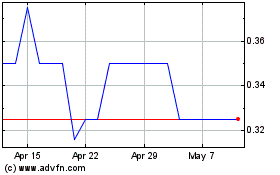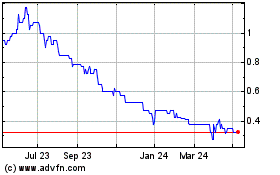TIDMBOD
RNS Number : 9215S
Botswana Diamonds PLC
22 March 2021
22(nd) March 2021
Botswana Diamonds PLC
("Botswana Diamonds" or the "Company")
Diamonds recovered from the River Kimberlite at Thorny River
Botswana Diamonds, the AIM and BSE listed diamond explorer, is
pleased to announce that eleven diamonds and abundant kimberlitic
indicators were recovered from drill samples at the recently
discovered River Kimberlite pipe at Thorny River in the Limpopo
Province of South Africa.
Highlights of the recovered kimberlitic indicators:
- Eleven diamonds of good colour and clarity
- Abundant indicators including G10, G9 and eclogitic garnets
- Chromites and chromium diopsides
John Teeling, Chairman, commented: " The recovery of so many
kimberlitic indicators and in particular diamonds, which are very
rare to recover in small sample narrow reverse circulation drill
holes is highly encouraging and bodes well for the potential
commerciality of this exciting discovery".
Following a detailed ground geophysical programme in October
2020, 6, six-inch percussion reverse circulation holes were drilled
into the newly discovered River Kimberlite pipe in the Limpopo
Province of South Africa during November 2020 . A combined total of
39.5m intersected kimberlite while an additional 55m intersected a
weathered kimberlite breccia.
Samples from these holes were taken at one metre intervals and
twenty of these totalling about 500kg were selected and submitted
to an independent processing facility for assessment through
screening, dense media separation and hand sorting. 11 diamonds,
172 G10 pyrope garnets, 623 G9 pyrope garnets, 555 eclogitic
garnets, 438 chromites and 268 chromium diopsides (clinopyroxene)
were recovered at sizes between
-1.0+0.3mm. Recoveries of a specific mineral species were capped
at 20 grains and thus this picture is a snapshot of the overall
sample indicator content. Importantly, all the samples contained
abundant kimberlitic indicators. The diamonds are all notably of
good colour and clarity and are of commercial quality and in high
demand by the market. The diamonds were not weighed as the sample
size was small and they are not representative of a possible
population.
Pyrope garnets are common in peridotite xenoliths from
kimberlite pipes, some of which are diamond-bearing. Pyrope found
in association with diamond commonly has a Chromium Oxide content
of three to eight percent which imparts a distinctive violet to
deep purple colouration. These are called G10 and G9 pyrope
garnets. Eclogites typically result from high to ultrahigh pressure
metamorphism of mafic rocks at low thermal gradients as they were
subducted to the upper mantle in a subduction zone. Garnets found
in eclogitic xenoliths tend to have a deep orange colour. Diamonds
in kimberlite come from both peridotitic and eclogitic xenoliths so
the abundance of both types of garnet in this sample is noteworthy
and this is supported by the recovery of diamonds from a relatively
small drill sample. Of significance too is that these diamonds are
all of good colour and clarity.
The next step is a detailed core drilling programme which is
planned for the dry season.
This release has been approved by James Campbell, Managing
Director of Botswana Diamonds plc, a qualified geologist
(Pr.Sci.Nat), a Member of the Geological Society of South Africa, a
Fellow of the Southern African Institute of Mining and Metallurgy,
a Fellow of the Institute of Materials, Metals and Mining (UK) and
with over 35-years' experience in the diamond sector.
This announcement contains inside information for the purposes
of Article 7 of Regulation (EU) 596/2014. The person who arranged
for the release of this announcement on behalf of the Company was
James Campbell, Director
A copy of this announcement is available on the Company's
website, at www.botswanadiamonds.co.uk
Enquiries:
Botswana Diamonds PLC
John Teeling, Chairman +353 1 833 2833
James Campbell, Managing Director +27 83 457 3724
Jim Finn, Director +353 1 833 2833
Beaumont Cornish - Nominated Adviser
Michael Cornish
Roland Cornish +44 (0) 020 7628 3396
Beaumont Cornish Limited - Broker
Roland Cornish
Felicity Geidt +44 (0) 207 628 3396
First Equity Limited - Joint Broker
Jason Robertson +44 (0) 207 374 2212
Blytheweigh - PR +44 (0) 207 138 3206
Megan Ray +44 (0) 207 138 3553
Rachael Brooks +44 (0) 207 138 3206
Said Izagaren +44 (0) 207 138 3206
Naomi Holmes +44 (0) 207 138 3206
Teneo
Luke Hogg +353 (0) 1 661 4055
Alan Tyrrell +353 (0) 1 661 4055
Ross Murphy +353 (0) 1 661 4055
www.botswanadiamonds.co.uk
ENDS
Glossary
Mafic rock : A mafic mineral or rock is a silicate mineral or
igneous rock rich in magnesium and iron. Most mafic minerals are
dark in colour, and common rock-forming mafic minerals include
olivine, pyroxene, amphibole, and biotite. Common mafic rocks
include basalt, diabase and gabbro
Pyrope garnet : Pyrope is the most well-known gemstone form of
Garnet. Its dark, blood-red colour is distinct and attractive, and
makes a fine Garnet gemstone. In the gem trade, the term Pyrope is
rarely used on its own. It is either generically called "Garnet",
or "Pyrope Garnet"
G9 and 10 garnets : Pyrope garnet found in association with
diamond commonly has a Cr2O3 content of 3-8%, which imparts a
distinctive violet to deep purple colouration (often with a
greenish tinge) and because of this is often used as a kimberlite
indicator mineral in areas where erosive activity makes
pin-pointing the origin of the pipe difficult. These varieties are
known as chrome-pyrope, or G9/G10 garnets.
Eclogitic garnets : The typical eclogite mineral assemblage is
garnet (pyrope to almandine) plus clinopyroxene (omphacite).
Eclogites record pressures over 1.2 GPa (170,000 psi), 45 km (28
mi) depth at about 400 to 1,000 degC (752 to 1,832 degF) and
usually over 600-650 degC (1,112-1,202 degF).
Peridotitic xenolith : A xenolith is a piece of rock trapped in
another type of rock. Xenoliths and xenocrysts are often identified
by the names of the two rock types involved. A peridotite xenolith
in a basaltic lava flow, for instance, means a chunk of the rock
peridotite is embedded in basalt rock. The peridotite is usually
yellow and dense, while the basalt is usually grey and light.
Subduction : Subduction is a geological process in which the
oceanic lithosphere is recycled into the Earth's mantle at
convergent boundaries. Where the oceanic lithosphere of a tectonic
plate converges with the less dense lithosphere of a second plate,
the heavier plate dives beneath the second plate and sinks into the
mantle.
This information is provided by RNS, the news service of the
London Stock Exchange. RNS is approved by the Financial Conduct
Authority to act as a Primary Information Provider in the United
Kingdom. Terms and conditions relating to the use and distribution
of this information may apply. For further information, please
contact rns@lseg.com or visit www.rns.com.
RNS may use your IP address to confirm compliance with the terms
and conditions, to analyse how you engage with the information
contained in this communication, and to share such analysis on an
anonymised basis with others as part of our commercial services.
For further information about how RNS and the London Stock Exchange
use the personal data you provide us, please see our Privacy
Policy.
END
UPDSFIFMUEFSEFD
(END) Dow Jones Newswires
March 22, 2021 03:00 ET (07:00 GMT)
Botswana Diamonds (LSE:BOD)
Historical Stock Chart
From Mar 2024 to Apr 2024

Botswana Diamonds (LSE:BOD)
Historical Stock Chart
From Apr 2023 to Apr 2024
